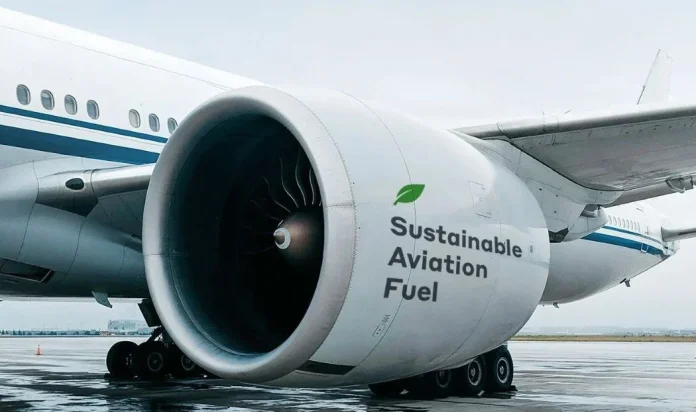The European Commission has unveiled the Sustainable Transport Investment Plan (STIP), a sweeping €100 billion initiative designed to accelerate the production and deployment of renewable and low-carbon fuels for aviation and shipping across Europe. Announced in Brussels in early November 2025, the plan represents one of the largest coordinated investment frameworks ever assembled for clean transport, with €2.9 billion already earmarked through 2027 to attract private co-investment.
The goal is to deliver roughly 20 million tones of sustainable fuels by 2035, about 13.2 million tones of biofuels and 6.8 million tones of synthetic e-fuels, aligning Europe’s aviation and maritime sectors with its 2050 net-zero ambitions and signaling a turning point in the global race to decarbonize heavy transport.
At its core, the STIP is an industrial strategy as much as it is a climate plan. It seeks to stabilise investor confidence by offering long-term regulatory clarity and mechanisms that reduce financial risk for early movers in the clean fuels market. This approach blends policy certainty with targeted financing through the Innovation Fund, Horizon Europe, InvestEU, and the European Hydrogen Bank.
Already, €300 million has been allocated to fast-track hydrogen-based aviation and maritime fuels, while additional funding is being channeled into synthetic fuel innovation and maritime decarbonization projects. By creating a single, unified framework for investment, the European Commission hopes to overcome the fragmented funding landscape that has slowed the scaling of clean fuels in the past decade.
Read also: Kenya Airways flies first African route, from Nairobi to Cape Town, on sustainable fuel
For Europe, the economic rationale is straightforward: its aviation and shipping sectors are among the most carbon-intensive, together accounting for around 8 percent of the bloc’s total greenhouse gas emissions. Decarbonizing these sectors is crucial not only for climate targets but also for maintaining industrial competitiveness.
The STIP’s design reflects that duality, it anchors environmental goals in a wider strategy of energy sovereignty, job creation, and technological leadership. Yet, the ripples of this plan extend far beyond Europe’s borders. For Africa, it represents both an opportunity and a challenge that will shape the continent’s emerging sustainability agenda.
Europe’s pursuit of 20 million tones of sustainable fuels by 2035 will create vast demand for feedstocks, from agricultural residues to energy crops and green hydrogen. Africa, with its abundant land, solar potential, and proximity to European markets, is naturally positioned to become a supplier in this new value chain. However, the question is not simply whether Africa can supply Europe’s clean fuel needs, but whether it can do so in a way that drives its own industrial transformation rather than perpetuating raw material dependence.
Current production levels tell a sobering story. Global sustainable aviation fuel output stood at about 1 million tones in 2024, expected to double to 2 million tones in 2025. To meet its target, Europe will need a tenfold increase in production capacity within a decade, a scale-up that will almost certainly reach into Africa’s bioeconomy.
Countries like Kenya, Ethiopia, Nigeria, and South Africa already feature in feasibility studies for feedstock cultivation and SAF (sustainable aviation fuel) production. The World Bank and regional energy agencies have identified technical potential for domestic production, but commercial viability remains constrained by high capital costs, infrastructure gaps, and uncertain policy environments.
To understand the stakes, consider that a medium-scale SAF plant requires hundreds of millions of dollars in upfront investment, along with long-term purchase guarantees to remain financially viable. Without such mechanisms, Africa risks remaining an exporter of crude bio-feedstocks, oilseeds, molasses, waste oils, instead of refining these materials into high-value fuels domestically. The result would replicate the extractive dynamics seen in past commodity cycles: exporting raw materials while importing finished products at a premium.
Read also: Ghana breaks ground on 200MW Solar Plant, targeting 1,000MW by 2032
The economics are equally pressing for African airlines. Fuel accounts for more than 30 percent of operational costs across the continent, a figure far above the global average. Locally produced sustainable fuels could, over time, offer a pathway to cost stability and emissions compliance, especially as international regulations tighten. Yet, at present, SAF costs several times more than conventional jet fuel, and without subsidy or policy support, few African carriers can afford the transition. The danger is that Europe’s subsidies and policy certainty will accelerate its own clean-fuel markets while leaving Africa outside the value chain.
There are, however, signs of strategic alignment. Morocco and Namibia are already positioning themselves as green hydrogen exporters, leveraging abundant renewable energy to serve both European and regional demand. South Africa’s green fuels roadmap also envisions producing synthetic jet fuels for export and domestic use. These early moves suggest that Africa can do more than supply feedstocks, it can manufacture, refine, and export clean fuels, provided that investment, infrastructure, and governance frameworks evolve in step.
The implications of Europe’s STIP are profound; It challenges policymakers to act deliberately, to create regulatory clarity, land safeguards, and industrial incentives that ensure green fuel production contributes to domestic growth and job creation. It also underscores the importance of strategic partnership: Europe’s demand for low-carbon fuels could finance Africa’s renewable infrastructure if structured equitably.

The EU’s plan ultimately underscores a shared global truth: the transition to clean energy is no longer about isolated climate action; it is about industrial positioning in a changing global economy. For Africa, the window to define its role in that transition is open but narrowing. Whether the continent becomes a participant in the new clean-fuel economy or remains a supplier of raw inputs will depend on how quickly it mobilizes policy, finance, and technology to align sustainability with competitiveness.





